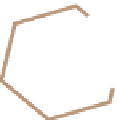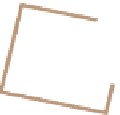Graphics Reference
In-Depth Information
Figure 35.10: Selecting the key poses to navigate a character through these corridors is a
problem at the interface between computer graphics and artificial intelligence (based on
figure from [AVF04], which discusses AI-based methods for motion planning.).
Consider the motion of a hovering robotic drone patrolling the interior of a build-
ing (Figure 35.10). We chose a hovering robot to avoid issues of rotating wheels
or limbs, and a deforming mesh. The entire motion of the robot can be expressed
as a change of the reference frame in which its rigid mesh is defined. This ref-
erence frame is called the
root frame
of the robot and the motion is called
root
frame animation.
(This is a case where context determines the meaning of over-
loaded technical terminology for motion. The word “frame” in the previous sen-
tence refers to a coordinate transformation, not an image; and “animation” refers
to the true 3D motion, not a sequence of images.)
If we assume that the robot is a uniform sphere in order to ignore the problem of
representing its rotational frame, the robot's animation is simply a formula for the
translation of its root frame,
x
(
t
)=
. We could approach this problem as either
key pose interpolation or a simulation. A hybrid strategy is often best for problems
like this: Given an ideal path based on key poses, simulate the actual motion of
the robot close to that path based on forces like gravity, the hover mechanism, and
drag. This captures both the high-level motion and the character of real physics.
What is the source of the key poses? For a character's walk cycle, we were
able to assume that an animator used some tool to create the key poses. To accu-
rately model an autonomous robot, or to create an interactive application, we can't
rely on an artist. The robot must choose its own key poses dynamically based on a
goal, such as navigating to a specific room. This is an Artificial Intelligence (AI)
problem. Real-world robots and video games with nonplayer characters solve it,
generally using some form of path finding algorithm. Path finding has been long
studied in computer science, primarily in the context of abstract graphs. For a 3D
virtual world we must solve not only the graph problem but also the local prob-
lems that arise from actual room geometry and multiple interacting characters.
...


























































































































































































































































